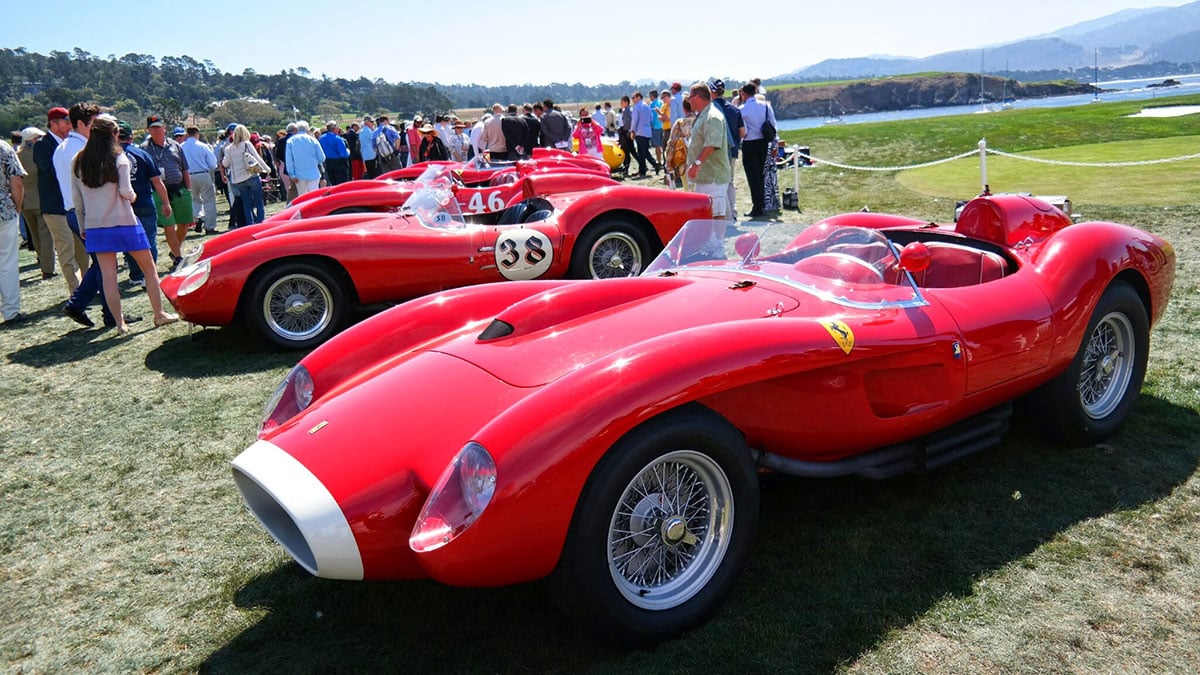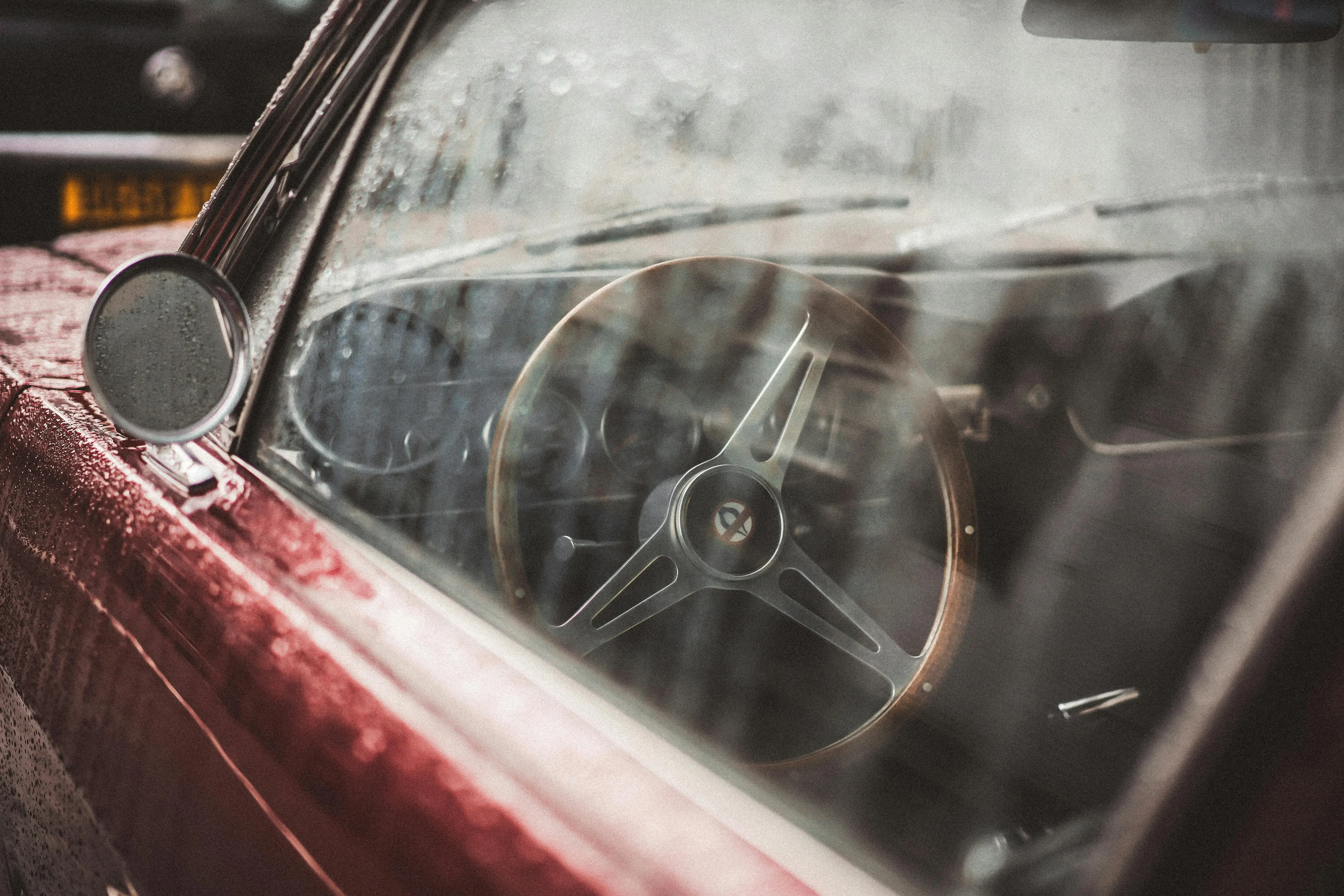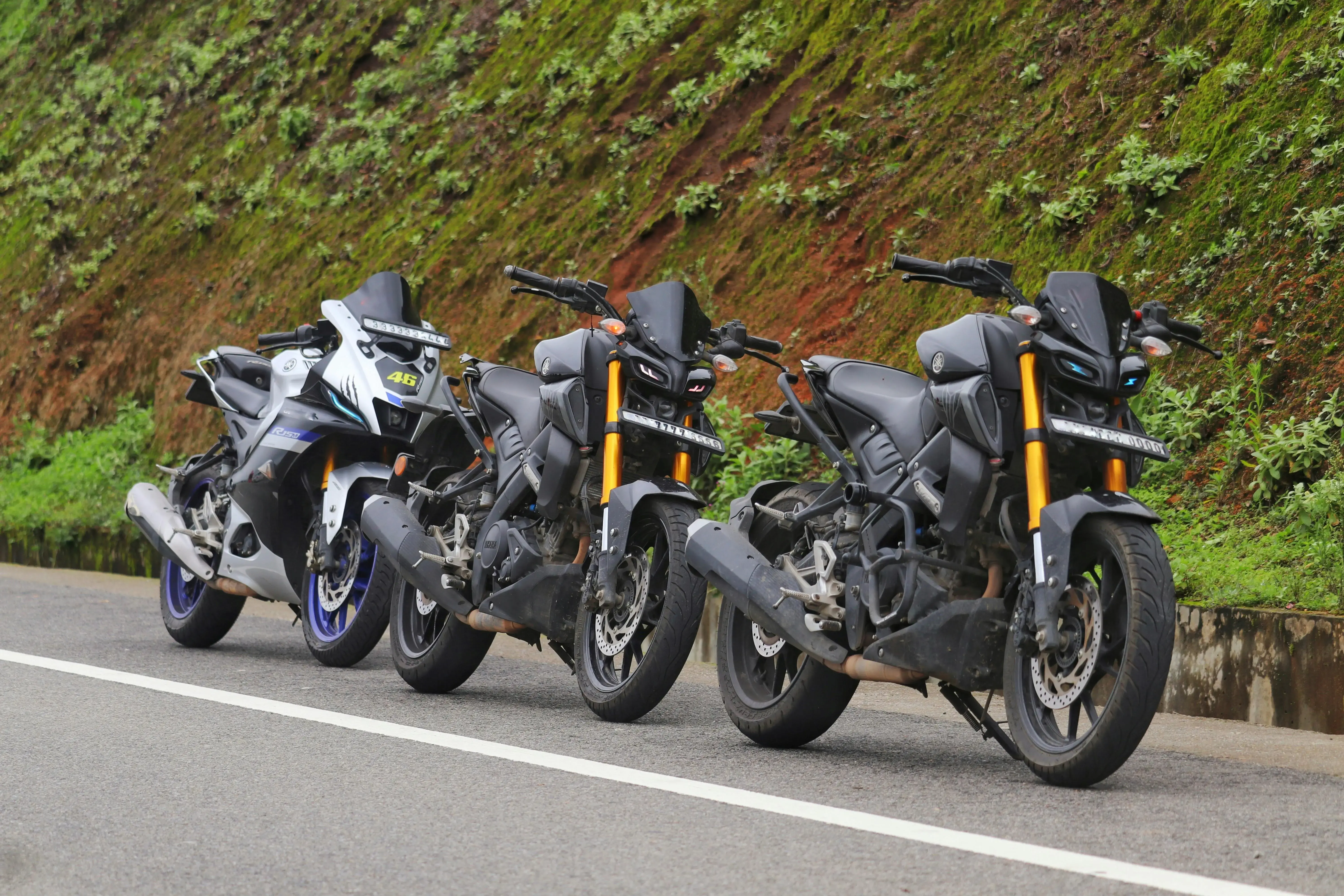Classic Cars Eligible for 25-Year Import in 2026: 2001 Models Guide
The 25-year import rule continues transforming automotive collecting in 2026, with an exceptional lineup of 2001 model year vehicles crossing the eligibility threshold for tariff-exempt US importation. As manufacturing dates roll forward from January 2001, enthusiasts gain access to iconic sports cars, luxury roadsters, practical classics, and performance legends previously restricted from American roads—all qualifying for EPA/DOT exemptions and avoiding the steep Section 232 tariffs affecting modern imports.
West Coast Shipping specializes in classic car imports under the 25-year exemption, coordinating sourcing, shipping, and customs clearance for newly eligible 2001 models from European and Japanese origins. This comprehensive guide examines the standout vehicles becoming import-eligible in 2026, explains their significance to collectors, and clarifies how the 25-year rule delivers substantial cost savings versus modern vehicle importation.
Important 25-Year Rule Reminder: Eligibility depends on exact manufacturing date (month and year of production), not model year designation. A vehicle manufactured in January 2001 becomes eligible January 2026; June 2001 manufacture requires waiting until June 2026. Professional documentation proving manufacturing date essential for exemption application.
Porsche Boxster 986

The first-generation Porsche Boxster represented a watershed moment for the Stuttgart manufacturer—delivering authentic mid-engine sports car dynamics at accessible price points while revitalizing Porsche's financial fortunes during the late 1990s economic challenges.
Why the Boxster 986 Matters
Mid-Engine Purity: The Boxster's balanced chassis layout with engine positioned behind the seats delivers genuine mid-engine handling characteristics previously reserved for exotic supercars—sharp turn-in response, neutral balance, and communicative steering that defined Porsche's sports car philosophy.
Water-Cooled Evolution: As Porsche's first water-cooled flat-six sports car (preceding even the 996 911 in production), the Boxster pioneered the engineering direction that would define modern Porsche performance while maintaining the brand's characteristic engine note and throttle response.
Attainable Investment: 2001 Boxster S models with the desirable 3.2L flat-six (252 hp) currently trade in the $12,000-$22,000 range for well-maintained examples—representing exceptional value for mid-engine Porsche ownership before appreciation accelerates post-eligibility.
Import Considerations
European Specification Advantages: Euro-market Boxsters often feature Sport Chrono packages, limited-slip differentials, and equipment combinations unavailable or rare in US-market equivalents—justifying importation despite domestic availability.
Mechanical Inspection Essentials: Pre-purchase inspections should focus on intermediate shaft (IMS) bearing condition, rear main seal integrity, coolant system condition, and convertible top operation—known maintenance items affecting long-term ownership costs.
25-Year Exemption Benefits: Avoiding EPA/DOT compliance requirements (estimated $9,500-15,000 for modern imports) and Section 232 tariffs (25% additional) makes European Boxster imports financially competitive with domestic market examples while accessing broader specification variety.
Honda CR-V (First Generation)
.webp?width=2276&height=1424&name=Honda_CR_V_(First_Generation).webp)
The original Honda CR-V revolutionized the compact crossover segment when introduced in 1995, establishing the formula for car-based SUVs that would dominate automotive markets for decades—combining sedan-like driving dynamics with SUV versatility and Honda's legendary reliability.
Why the First-Gen CR-V Deserves Recognition
Segment Pioneer: As one of the earliest car-based compact crossovers alongside Toyota RAV4, the first-generation CR-V (chassis code RD1/RD2/RD3) helped define a vehicle category that would eventually outsell traditional sedans and body-on-frame SUVs globally.
Real-Time 4WD Innovation: Honda's Real-Time 4WD system utilized hydraulic coupling technology to seamlessly transition between front-wheel drive and all-wheel drive based on traction needs—delivering efficiency without sacrificing capability while eliminating traditional AWD complexity.
Legendary Reliability: Built on the proven sixth-generation Honda Civic platform with the bulletproof B20B 2.0L inline-four engine (146 hp, 133 lb-ft), first-gen CR-Vs routinely exceed 250,000-300,000 miles with basic maintenance—establishing Honda's SUV reputation for longevity.
Practical Design Excellence: The CR-V's innovative features included a fold-flat picnic table integrated into the cargo floor, stadium-style rear seating for improved visibility, and exceptionally space-efficient interior packaging maximizing utility from modest exterior dimensions (177.6" length).
Import Justification
Japanese Market Exclusives: JDM-spec CR-Vs featured right-hand drive, unique trim packages, and specification combinations never offered in US markets—appealing to Honda enthusiasts seeking authentic Japanese-market examples with complete documentation.
European Diesel Variants: European CR-V models offered diesel powertrains unavailable in North America, delivering exceptional fuel economy while maintaining Honda build quality—increasingly desirable as classic diesel regulations prove less restrictive than modern emissions standards.
Condition and Mileage Advantages: Japanese and European-market CR-Vs often present in superior mechanical condition versus high-mileage US examples, with comprehensive service histories, original equipment preservation, and rust-free bodies from milder climates.
Manual Transmission Availability: While most US-market CR-Vs came with automatic transmissions, Japanese and European markets offered five-speed manual transmissions throughout production—providing driving engagement unavailable in most domestic examples.
Collector Appeal
First-Gen Nostalgia: As the original CR-V generation that established Honda's SUV legacy, first-gen models hold special significance for Honda enthusiasts and automotive historians documenting the evolution of compact crossovers.
Attainable Classic Status: With values currently ranging $3,000-$8,000 for clean examples, first-gen CR-Vs represent accessible entry into 25-year exemption importing while offering genuine practical use as reliable transportation.
Growing Enthusiast Community: Dedicated first-generation CR-V communities actively restore, modify, and preserve these pioneering crossovers—with aftermarket support, parts availability, and technical knowledge facilitating long-term ownership.
BMW 5-Series E39

The E39-generation BMW 5-Series earned widespread recognition as the pinnacle of sport sedan development—balancing sophisticated technology, driver engagement, and build quality that enthusiasts consider unmatched in subsequent generations.
Why the E39 Remains Legendary
Chassis Perfection: Automotive journalists consistently rank the E39 among history's finest driving sedans, with naturally weighted steering, balanced suspension tuning, and structural rigidity delivering engagement modern electronics-laden sedans struggle matching despite performance advantages.
Engine Diversity: The E39 lineup spanned from efficient inline-sixes through the legendary M5's 4.9L V8 (394 hp)—with European markets offering additional diesel variants and specification combinations unavailable domestically providing import justification.
Timeless Design: The E39's clean, proportional exterior styling aged gracefully versus trend-chasing contemporaries, while interior ergonomics and material quality exceeded most modern equivalents despite 25-year age gaps.
Import Opportunities
European Market Exclusives: Euro-spec E39s included rare touring (wagon) variants, M-Sport packages with unique suspension/wheel combinations, and diesel powertrains offering performance with exceptional efficiency—models never officially imported to US markets.
Condition Advantages: European climate and road salt usage patterns often result in superior rust-free condition versus Midwest US examples—particularly valuable for long-term collector ownership.
M5 Considerations: While US-market E39 M5s exist, European examples offer manual transmission options throughout production (vs. US's late-availability manual), along with specification differences justifying importation for purist collectors.
Volkswagen Passat B5

The B5-generation Volkswagen Passat represented VW's ambitious push upmarket, sharing platform architecture with Audi's A4/A6 while delivering refined driving dynamics and build quality rivaling premium competitors at mainstream pricing.
Why the B5 Passat Deserves Recognition
German Police Heritage: Volkswagen Passat B5 models served extensively in German police (Polizei) fleets, with reinforced suspensions, upgraded cooling systems, and durability modifications making surviving examples particularly robust—visible in the police livery example shown.
Platform Sharing Benefits: Built on Volkswagen Group's B5 (PL45/PL46) platform shared with Audi A4, the Passat inherited sophisticated multi-link suspension, advanced safety structures, and refinement levels exceeding typical mid-size sedan standards.
Variant Diversity: European markets offered Passat B5 in sedan, wagon (Variant), and all-wheel-drive (4Motion) configurations with gasoline and diesel engine options—many combinations never reaching US shores despite domestic Passat availability.
Import Justification
Diesel Performance: European-market TDI (turbodiesel) variants delivered exceptional fuel economy with surprising performance—particularly desirable as classic diesel regulations prove less restrictive than modern emissions standards.
Unique Specifications: Police-spec Passats feature upgraded components, comprehensive maintenance documentation, and historical significance appealing to collectors beyond standard civilian models.
Condition and Mileage: European examples often present lower mileage and superior mechanical condition versus equivalently-aged US-market Passats, with complete service histories and original equipment preservation.
Citroën Berlingo

The Citroën Berlingo represented French automotive practicality at its finest—prioritizing space efficiency, versatility, and unconventional design over conventional automotive aesthetics or performance metrics.
Berlingo's Unique Appeal
Space Maximization: The Berlingo's van-derived architecture delivered exceptional interior volume relative to exterior dimensions, with sliding rear doors, flat load floors, and configurable seating arrangements optimizing utility beyond traditional compact vehicles.
Citroën Quirkiness: True to Citroën's unconventional engineering philosophy, the Berlingo featured distinctive design elements, innovative interior storage solutions, and practical features prioritizing owner needs over market conventions.
Never-Imported Rarity: No Citroën models reached US markets during the Berlingo's production era, making 2001 examples among the first modern Citroëns eligible for US importation—appealing to French car enthusiasts and collectors seeking automotive diversity.
Import Considerations
Practical Classic Status: While lacking sports car glamour, the Berlingo represents an emerging "practical classic" category—vehicles valued for utility, design uniqueness, and cultural significance rather than performance credentials.
Parts Availability Challenges: Citroën's US market absence creates parts sourcing complexity—prospective importers should identify European suppliers or establish relationships with specialty importers before purchase commitment.
Niche Collector Appeal: Berlingo imports appeal to enthusiasts valuing automotive diversity, French design philosophy, and practical vintage vehicles for active use rather than garage-queen preservation.
Ferrari 550 Maranello

The Ferrari 550 Maranello marked Ferrari's return to front-engine V12 GT supremacy, reviving the brand's grand touring heritage with modern performance, timeless design, and driving dynamics earning "last of the analog Ferraris" status among collectors.
550 Maranello Significance
V12 GT Excellence: The 550's 5.5L naturally-aspirated V12 (478 hp) delivered effortless performance with iconic Ferrari soundtrack—representing the marque's front-engine GT philosophy at its pinnacle before electronics-dominated modern successors.
Analog Driving Experience: Lacking traction control, stability systems, or electronic steering assistance standard in later Ferraris, the 550 demands driver skill while delivering unfiltered feedback—characteristics increasingly valued as modern supercars add electronic intervention layers.
Appreciation Trajectory: Recent auction results show 550 Maranello values climbing from $120,000-$180,000 (2020 averages) to $180,000-$280,000+ for exceptional examples—with 25-year exemption eligibility likely accelerating appreciation as import barriers drop.
Import Opportunities
European Specification Differences: Euro-market 550s include specification variations, color combinations, and equipment packages differing from US-market examples—with some collectors preferring European-delivery histories and original-market provenance.
Maintenance Documentation: European Ferrari dealers often provide comprehensive service records and pre-purchase inspections through official channels—adding confidence for significant investment imports.
25-Year Cost Advantages: Avoiding Section 232's 25% tariff (saving $45,000-70,000 on typical 550 values) plus EPA/DOT compliance exemption makes European 550 imports financially compelling versus modern Ferrari acquisition.
Lotus Elise Serie 1

The original Lotus Elise Serie 1 revolutionized lightweight sports car design, delivering go-kart-like handling through radical weight reduction, bonded aluminum chassis technology, and mid-engine layout—establishing performance benchmarks that influenced an entire generation of sports cars.
Why the Serie 1 Elise Matters
Weight Revolution: At just 1,598 lbs curb weight, the Serie 1 Elise achieved power-to-weight ratios rivaling supercars despite modest 118 hp output—with 0-60 mph in 5.1 seconds demonstrating that lightness trumps horsepower for real-world performance.
Chassis Innovation: Lotus's bonded and riveted aluminum chassis technology delivered exceptional rigidity at minimal weight, with manufacturing techniques influencing subsequent supercar development at brands including Tesla, Aston Martin, and others licensing Lotus expertise.
Never US-Certified: Serie 1 Elise models never received US certification, making 2001 examples the first eligible for legal US importation under 25-year exemption—unlocking access to Lotus's purest lightweight philosophy.
Import Considerations
Right-Hand Drive: Most Serie 1 Elise production featured right-hand drive for UK and Japanese markets—importers should confirm comfort with RHD operation or specifically source rare left-hand-drive European examples.
Maintenance Specialization: Elise ownership requires specialist mechanics familiar with Rover K-series engines, aluminum chassis repair techniques, and Lotus-specific systems—research service provider availability before import commitment.
Collectible Trajectory: As the genesis of modern Lotus sports cars and never US-available, Serie 1 Elise values likely appreciate significantly post-eligibility as enthusiasts recognize historical significance and driving purity.
Pontiac Grand Prix

The seventh-generation Pontiac Grand Prix represented General Motors' front-wheel-drive performance sedan approach, with supercharged V6 options, aggressive styling, and NASCAR-influenced marketing appealing to domestic performance enthusiasts during the early 2000s.
Grand Prix Import Justification
Brand Extinction Collectibility: Pontiac's 2010 discontinuation transforms late-production models into automotive history—particularly performance variants like the supercharged GTP becoming increasingly collectible as brand nostalgia intensifies.
Supercharged Performance: Grand Prix GTP models featured GM's 3.8L supercharged V6 (240 hp), delivering compelling performance for the era with distinctive supercharger whine and front-drive dynamics appealing to specific enthusiast segments.
Reverse Export Scenarios: While importing domestic-market Pontiacs to the US seems counterintuitive, some US-built examples were exported new to Canadian or other markets—with specific rare variants or pristine low-mileage examples potentially justifying re-importation under 25-year exemption.
Collector Considerations
Niche Appeal: Grand Prix imports target Pontiac brand enthusiasts, GM performance collectors, or individuals seeking specific rare color/option combinations more readily available in export markets than domestic used car market.
Parts Availability Advantages: As US-market vehicles, parts sourcing proves straightforward versus European or Japanese imports—with GM dealer networks and aftermarket suppliers maintaining comprehensive support.
Historical Documentation: Export-market Pontiacs often include unique documentation, original delivery paperwork, and provenance differentiating them from common domestic examples—adding collector value beyond mechanical specifications.
Volvo V70 Typ L

The second-generation Volvo V70 represented Swedish wagon excellence—combining Volvo's legendary safety engineering, versatile wagon practicality, and refined driving dynamics that earned cult following among enthusiasts valuing substance over automotive flash.
V70 Typ L Significance
Wagon Practicality: The V70's spacious cargo area, rear-facing third-row seating option (in some markets), and family-friendly ergonomics delivered genuine seven-passenger utility in wagon format—increasingly rare as SUVs dominated family vehicle segments.
Turbocharged Performance: European-market V70 T5 and R variants featured turbocharged inline-5 engines producing up to 247 hp (T5) or 300 hp (V70 R)—delivering sports car performance in practical wagon packaging.
Never-Imported Variants: Certain V70 specification combinations, diesel variants, and European-market exclusives never reached US shores despite domestic V70 availability—justifying importation for enthusiasts seeking specific configurations.
Import Opportunities
European Diesel Excellence: V70 D5 diesel models offered exceptional fuel economy (40+ mpg highway) with surprising performance—appealing to eco-conscious collectors as classic diesel emissions prove less restrictive than modern standards.
Condition Advantages: Scandinavian-market V70s often present in exceptional condition with comprehensive maintenance histories, rust-free bodies, and meticulous original-owner care reflecting Swedish automotive culture.
Practical Classic Status: As family-friendly classic wagons, imported V70s serve dual roles as collectible vehicles and practical daily transportation—unique positioning versus garage-bound sports cars.
Mercedes-Benz SLK R170

The first-generation Mercedes-Benz SLK introduced the innovative vario-roof retractable hardtop system, combining convertible open-air motoring with coupe-like refinement and security in a compact luxury roadster package that redefined the segment.
SLK R170 Innovation
Retractable Hardtop Pioneer: The SLK's electro-hydraulic folding hardtop mechanism represented groundbreaking technology when introduced—delivering convertible versatility without traditional soft-top compromises in security, noise insulation, or weather protection.
Compact Luxury Positioning: Sized smaller than the SL roadster, the SLK offered accessible entry to Mercedes convertible ownership with premium materials, advanced safety systems, and brand cachet at lower price points than flagship models.
Varied Powertrains: SLK R170 production spanned base four-cylinders through the supercharged SLK 32 AMG's 349 hp V6—with European markets offering diesel variants and specification combinations unavailable domestically.
Import Considerations
AMG Performance: The SLK 32 AMG represented Mercedes-AMG's supercharged era, with hand-assembled engines, upgraded brakes/suspension, and exclusivity appealing to performance-oriented collectors—European examples may offer unique specifications or colors.
Hardtop Mechanism Inspection: Pre-purchase inspections must verify vario-roof operation, hydraulic system condition, and mechanism component integrity—repairs prove expensive and complex if neglected.
Collectible Trajectory: As the original retractable hardtop roadster and first compact Mercedes convertible, R170 values likely appreciate moderately as enthusiasts recognize historical significance and technological innovation.
25-Year Exemption Savings Breakdown
EPA/DOT Compliance Avoidance: Modern vehicle imports require Registered Importer modifications bringing cars to US emissions/safety standards—estimated costs: $9,500-28,500+ depending on vehicle complexity. Classic imports avoid these expenses entirely through manufacturing age exemption.
Section 232 Tariff Exemption: Vehicles properly classified under HTS 9903.94.04 avoid the 25% Section 232 tariff affecting modern imports—saving $12,500-75,000+ on typical classic vehicle values ($50,000-$300,000 range).
Simplified Customs Process: Classic vehicle imports require only standard customs entry, 2.5% base duty payment, and basic documentation—avoiding the complex compliance paperwork, Registered Importer coordination, and extended processing timelines affecting modern imports.
Total Cost Advantage: Combining compliance exemption, tariff avoidance, and simplified processing, classic imports under the 25-year rule typically save $22,000-100,000+ versus equivalent-value modern vehicle imports—substantial advantages driving collector interest.
2026 Import Timeline
Rolling Eligibility: Vehicles become eligible based on exact manufacturing date—January 2001 manufacture qualifies January 2026, December 2001 manufacture requires waiting until December 2026 for legal importation.
Strategic Timing: Sourcing vehicles several months before eligibility allows securing desirable examples before prices surge post-importation legality—early deposits with European dealers or Japanese exporters recommended.
Documentation Preparation: Manufacturing date verification through VIN decoding, original registration documents, or manufacturer certificates of origin essential for exemption application—begin gathering documentation early to prevent import delays.
For personalized classic car import quotes and 25-year exemption guidance, use our car import calculator providing:
-
Current shipping cost estimates for your specific origin and destination
-
Customs duty calculations under classic vehicle exemption classification
-
Complete door-to-door timeline projections
-
Documentation requirement checklists
Our classic car import specialists assist with:
-
Sourcing assistance for specific 2001 model year vehicles in European and Japanese markets
-
Manufacturing date verification and exemption eligibility confirmation
-
Professional container shipping with enclosed protection
-
Customs brokerage and HTS 9903.94.04 classification coordination
-
State-specific titling and registration guidance
Contact West Coast Shipping for expert classic car import support ensuring smooth 25-year exemption processing, cost-effective logistics, and compliance confidence for your 2001 model year import acquisition.
Calculate Your Classic Import Costs and Benefits
Understanding the 25-year exemption's financial advantages enables accurate cost comparisons between newly eligible 2001 classics and modern vehicle imports facing substantial compliance requirements and tariff exposure.
You May Also Like
These Related Stories

Top Classic Car Events in the US in 2024

Shipping A Car To Honduras: Complete 2025 Import Guide

-093789-edited.png?width=220&height=79&name=wcs_final_logo_(1)-093789-edited.png)
